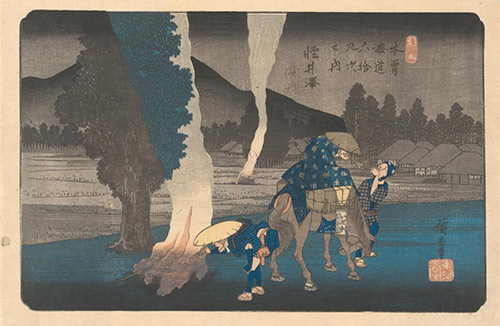For thousands of years, blue pigments have traditionally been reserved for objects of extreme wealth and veneration. Produced largely from cobalt, lapis lazuli, or indigo, blue pigment was expensive and hard to find. A creative exhibition in Australia is spotlighting the fascinating metamorphosis of pattern, form, and motif stemming from the global trade of Asian ceramics, textiles, prints, and paintings — which extensively used a blue and white palette.
On view now at the National Gallery of Victoria in Melbourne, Australia, “Blue: Alchemy of a Colour” is a fascinating and creative exhibition exploring one of the most sought-after and coveted pigments in history: blue. During the 17th and 18th centuries, Persian, Chinese, Japanese, and Vietnamese artisans popularized a type of stoneware characterized by the use of beautiful cobalt-blue glazes on porcelain, a style of ceramics that can still be found today in countless homes across the world. Also exported from Asia were lavish indigo-dyed textiles with elaborate wood-block-printed designs that would eventually inspire some of history’s greatest modern artists, including Claude Monet and Gustav Klimt.

Japanese, “Summer kimono,” Yukata Meiji period 1868-1912, cotton, 145.3 x 133.3 cm.
(c) National Gallery of Victoria 2015
Selected works from the National Gallery of Victoria as well as important loans from across the globe will feature in “Blue,” which will also trace the pigment’s history and trade. A particularly stunning example from the show is a Korean “Dragon Jar” produced in the 18th century. The bulbous jar has a gorgeous and full shoulder that leads to a small base, which is proportionally sized to the piece’s neck and rim. Twisting and turning as it wraps around the entire vessel is an outstanding dragon — a traditional motif found in many Asian artworks. Filling the negative spaces are stylized arrangements of cloud-like forms and decorative lines the organize the surface and distinguish the foot from the body, body from neck, and neck from rim.

Utagawa Hiroshige, “Karuizawa,” ca. 1830, color woodblock print, 25.6 x 38.2 cm. (c) National Gallery of Victoria 2015
“Blue: Alchemy of a Colour” opening on November 6 and will be on view through March 16.
To learn more, visit the National Gallery of Victoria.
This article was featured in Fine Art Today, a weekly e-newsletter from Fine Art Connoisseur magazine. To start receiving Fine Art Today for free, click here.








